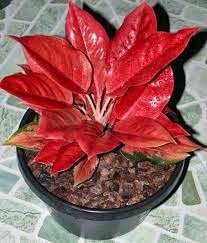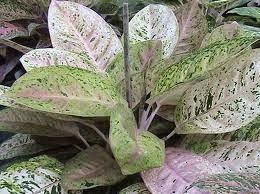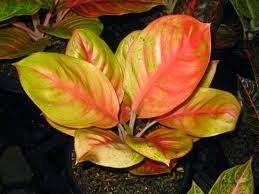As an ornamental plant leaves, aglaonema in demand by many people. Because it has a variety of leaf color patterns. The striking colors radiate enchanting charm. The development of aglaonema is currently very rapid. Silangan newly emerging, both from within and abroad. Beautiful ornamental plants, this is easy to maintain and not fussy. Durable in the room making it suitable for indoor ornamental plants.

As a hobbyist to choose aglaonema must know the character of the aglaonema, especially if you want to be used as a breeder to be developed. Actually there are 3 basic breeders of this ornamental plant. First, the generative way. That is multiplication with seeds. This method is somewhat complicated, because it must know the marriage techniques in this plant. Marriage in aglaonema can not be natural. Because the male and female flowers so one and wrapped by a myriad. Second, the vegetative way. Plant propagation in this way is easy to do. No special technical knowledge is required. Can produce ornamental plants in large quantities with similar properties iiduknya. Third, the way of tissue culture. This method can actually produce the number of tillers en masse. But it requires special knowledge and great cost to make the laboratory.
In this post will be discussed how to reproduce aglaonema yg easy to do by anyone, even if a new hobbyist. Vegetative propagation through cuttings, both stems, tillers and transplants are all easily done and the results are quickly obtained.

Stem Cuttings

Aglaonema plant propagation in this way can be done on plants that already have stems. Done to quickly get puppies. Usually when the type of aglaonema plants are in great demand and stock is limited. It is also done on aglaonema which is difficult to remove seedlings.
The stages are as follows:
Select aglaonema stems that are old and healthy.
Selected stem cut, then make 3 ~ 5 cm pieces or at least 1 candidate eye buds on each piece.
Plant the pieces of the stems horizontally in the planting medium that has been prepared. Keep the stem is not immersed entirely and the eyes shoot at the top.
Watering is done by way of sepray, planting medium should not dry.
New shoots and roots will appear after 6 weeks.
Shoot Cuttings

Performed on aglaonema plants that have good roots. Sometimes it is done on aglaonema whose growth of the pupil is slow. New aglaonema plants will be produced that have been formed well.
The stages are as follows:
Choose a healthy parent plant and has enough roots to the surface of the media.
Cut the selected stem, at least 3 roots elongated on the top stem.
Apply a wound cover solution (fungicide) on the stem cuts and rootstock.
Plant the top stem (plant tip) dipot separate, then flush the media evenly.
Put in a shady place, not exposed to direct sunlight. New roots begin to grow after 3 weeks.
Treatment of rootstock as usual, will grow new shoots.
Chicks

Usually this system is done on aglaonema plants that quickly produce seedlings. Also done when the demand for certain types increases. In the separation of the tillers are often done while changing the media broodstock, so that while harvesting the new tillers, also improve the media and its parent. It is expected that after that the parent growth will be good and quickly produce new puppies again.
The stages are as follows:
Select aglaonema plants that have formed a lot of tillers, or the pot is full of plants.
Unplug the aglaonema plant from its pot.
Select saplings that have been leaved at least 2 open, then cut the stem connecting the parent and tillers. Keep the existing root undamaged or broken.
Apply a wound cover solution (fungicide), on the cut marks of each plant.
Plant the seedlings that have been separated in new pots, adjust the size of the pot with large seedlings are planted. The remaining mains are also replanted with new media.
Put the seedlings in a shaded spot and not exposed to direct sunlight or rain. New roots will grow after 3 weeks.
Cutting stems in the above three ways should use a sharp knife and sterile. This is to minimize the contamination of bacteria and stem rot fungi. Very-very easy to do by anyone. The success rate of vegetative propagation is determined by the equipment in use.
